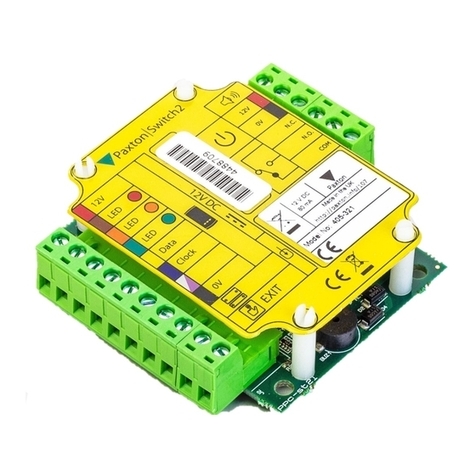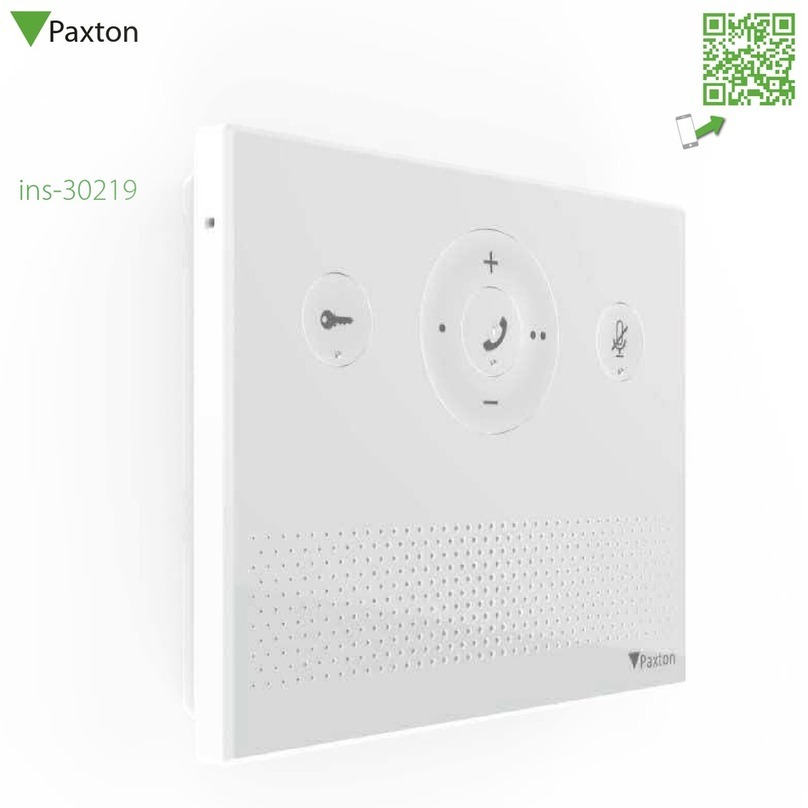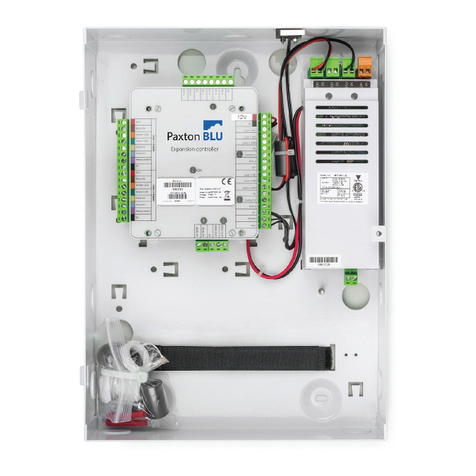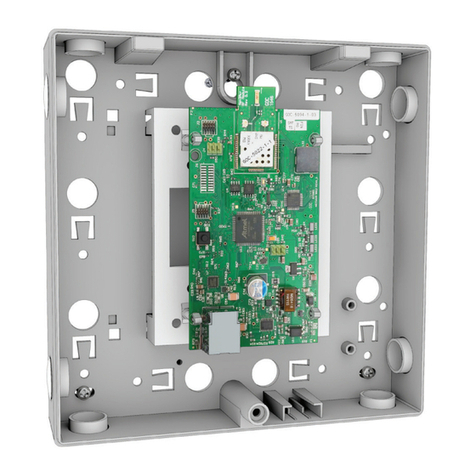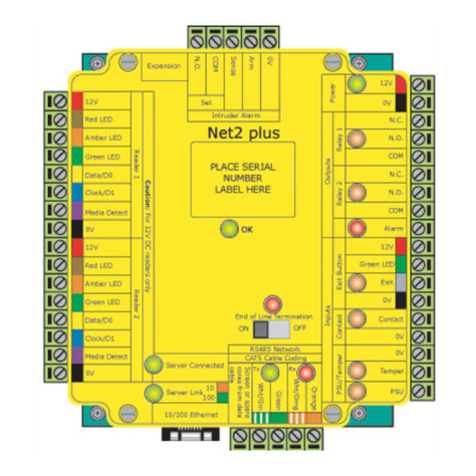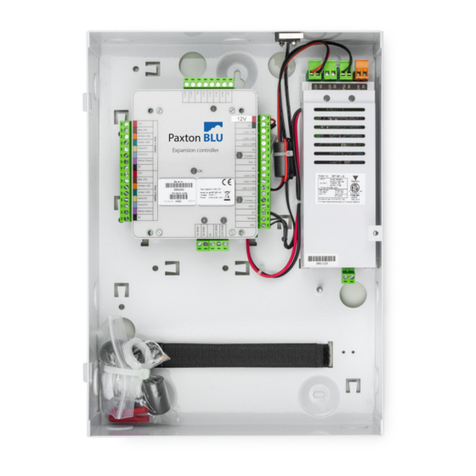
Page5
A Nano must rst bind to a Net2Air bridge before it will enroll itself onto the Net2 system. The term 'bind' is used
to denote the xed relationship between a Nano and its bridge.
Create a user record in the database and assign a Net2 token to the user. If you are not using PROXIMITY tokens
you should still create the user record and assign a token number (Not a PIN) of your choice. These records can
be deleted after the installation is complete.
Connect a PROXIMITY reader to the Nano and then present the same user token previously assigned. (If you are
enrolling a Keypad only unit, enter the token number on the keypad followed by * ) The Nano will then transmit
the token number and wait for a response from a bridge.
If more than one bridge replies, the Nano checks the signal strength and selects the strongest bridge to
communicate with. The Net2 software conrms that the token number is in the database and if so registers this
Net2 nano/bridge binding.
Enrolling a Net2 nano
Software conguration
Reader: Settings for the Reader and Keypad.
Outputs: Lock, Relay, Alarm. - Selects these outputs to be
used by the Lock, Bell or Alarm functions.
Alarm: Congures the settings for the dierent alarm types.
Codes: Valid keypad codes can be viewed, added and removed
(This tab is only displayed when a keypad is tted)
Events: Shows the events for this control unit only.
Access Rights: Lists users who have access through this door.
Name: Each reader can be named individually if required.
Reader type: Set the reader type, if applicable.
Keypad type: Set the keypad type, if applicable
Reader operating mode: Set the operating mode.
Timed operating modes: A dierent operating
mode can be congured within a time window.
Door name: Name the Door.
Door open time: Set the door open time.
Unlock the Door during: Holds the door unlocked during this
timezone. - Set to 'At No Time' for normal user operation.
Present a token at each reader. An event for each read should appear in the Events screen.
Change the default password for the System Engineer.
Set up other operators if required.
Set up time zones.
Set up access levels.
Users can be added & assigned to the required access level.
Departments can be created if required.
The Net2 CD can assist here with detailed application notes for setting up users and general system operation.
System checks
UL compatable readers
Part Type
373-110-US PROXIMITY P75 reader
373-120-US PROXIMITY P75 reader, screw connector
353-110-US PROXIMITY P50 reader
390-747-US PROXIMITY metal reader
390-727-US PROXIMITY metal reader, chrome
390-737-US PROXIMITY metal reader, brass
390-135-US PROXIMITY panel mount reader
Part Type
371-110-US TOUCHLOCK K75 keypad
371-120-US TOUCHLOCK K75 keypad, screw connector
372-110-US TOUCHLOCK K75 stainless steel keypad
372-120-US TOUCHLOCK K75 stainless steel, screw connector
375-110-US PROXIMITY KP75 keypad
375-120-US PROXIMITY KP75 keypad, screw connector

